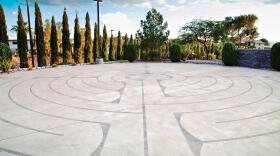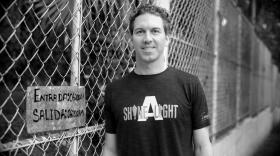‘The images pull at you. I had to go and help.’
Within minutes, paradise became rubble. A 7.0 magnitude earthquake racked the Caribbean island of Haiti on January 12, 2010, leaving utter ruin in its wake. The epicenter struck the small seaside town of Léogâne, 16 miles west of Port-au-Prince. Rebuilding and renewal efforts have been slow, due to failed infrastructure and corruption that siphoned off financial aid. All the more reason to get involved and help rebuild — literally.
Architect William Snyder was moved by the devastation. “You donate money and aid, but the images pull at you. I had to go and help,” he says. As the namesake principal behind Tate Snyder Kimsey, a 51-year-old Henderson-based architecture practice, Snyder is now drawing upon three decades of design and development experience to rebuild a Léogâne elementary school. It’s more than a school, though. It’s a lifeline. Schools play a crucial role in Léogâne, where some students walk barefoot four hours a day to attend class. Snyder’s school aims to teach more than just reading and writing. He hopes his design could serve as a prototype model for other school rebuilding efforts.
You see, Haiti lacks building codes as well as steel manufacturing and fabricating plants. Most of the country’s concrete is either homemade or bought piecemeal from sidewalk vendors, who often try to make an extra buck by diluting the concrete mix with sand. “Now, we’re teaching them how to build correctly and giving them skills they can use to rebuild their community,” Snyder says. He had a little help from the neighbors.
With the support of the Red Cross, Snyder has involved the community in every step of the school rebuilding effort. A steering committee made up of locals is tracking the project’s progress. “It gives them a sense of pride and ownership,” he says.
Plans call for a durable, low-cost, sustainable building that uses sunlight for illumination, passive ventilation for cooling and a rainwater collection system. These aren’t just fancy green perks for mere show, though. Such features are vital to Léogâne, which still lacks power and running water.
Snyder is showing them how to build better, but they’re teaching him a few lessons too. “I was amazed at how upbeat and resilient the Haitian people are,” says Snyder. “They have nothing, but they are still friendly and inviting. It’s inspiring.”








